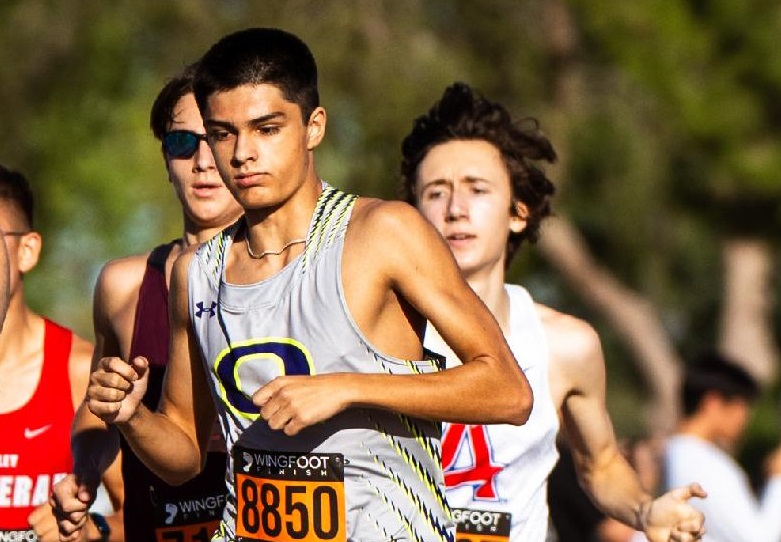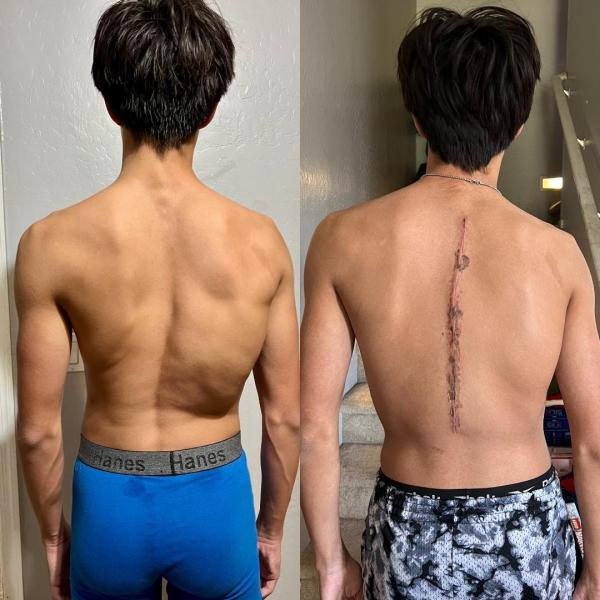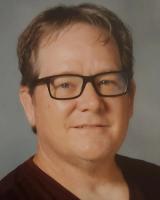Straightened out and breathing easy
September 18, 2025 by Jason P. Skoda, AZPreps365

Eli Pacheco never felt anything like it. His brain and lungs were not receiving enough oxygen. His body was shutting down.
There was nothing he could do but follow his instincts, push through the pain and finish the race.
It's what runners do.
Then he could collapse. And he did just that.
As many times as he had crossed the finish line exhasuted before this was something unusual for him. Not for other runners, seeing an athlete collapse at the end of 3.1 miles is a common occurrence at cross country meets.
It’s like the finish line has a weird gravitational pull that eats up those stumbling toward the finish.
But this was different. He’d always get a “side stitch” cramp.
But collapse?
Never.
Until he did.
The Queen Creek junior has run since joining a club in elementary school and competitively since middle school. It came natural and he never reached total exhaustion point where his body fell to the ground afterward.
“I didn’t know what was happening,” he said. “I had no control of my body at the end. I’ve never felt anything like that and I couldn’t stop (falling) from happening. It was a terrible feeling. Like I didn’t have control.”
It became clear that something bigger was happening when the trainer attended to him at the annual Desert Twilight meet last season. His scoliosis, which the family knew about since elementary school, had reached a point that it was hindering his ability to breath, meaning a lack of oxygen to the brain.
In fact, when first diagnosed his back curvature was in the 30 percent range and by his sophomore year it reached 60 percent. It reached a critical stage for someone who has a desired to run at the college level.
 Eli Pacheco's scoliosis reached the point that he collapsed doing the thing he loved to do: run. (Pacheco family photo)
Eli Pacheco's scoliosis reached the point that he collapsed doing the thing he loved to do: run. (Pacheco family photo)
It led to a couple decisions having to be made.
Should he have surgery to insert at metal rod that runs along his spine? Going under the knife at such a young age is daunting. And if so, when?
Wait until he graduates two and half years later? Or address it as soon as possible. So much to contemplate.
“We weren’t sure what was the best decision,” his mother, Karla, said. “If we did it right away then he was going to miss time for cross country. If we waited until December then he’d miss track. If we did it after graduation, he would run in pain and jeopardize running in college.”
They decided to do it soon after the consultation and went on a family trip to Hawaii to get away from it all for a while. He finished the cross-country season and placed 89th at state with a time of 17 minutes and 38.7 seconds.
“I went on a run just in case,” Pacheco said. “I was having surgery the next day, and I didn’t know if I’d ever be able to run again.
He ended up having it on December 6, 2024. Take a guess what Pacheco made sure he did the day before major surgery.
“I went on a run just in case,” he said. “I was having surgery the next day, and I didn’t know if I’d ever be able to run again. I wanted to make sure I got out and ran, then came home and was pretty calm because we had a lot of family in town because of the surgery.
“I was nervous and worried, but getting that run in helped calm me down.”
The bar, which runs the length of his spine from the T3 disc to L1, limits his mobility while running and stretching. He can no longer bend over, it makes tying shoes interesting or do somersaults.
But guess what he can do? Run without “side stiches.”
With the new back alignment, his rib cage is no longer compressing his lungs and limiting his oxygen. The ability to take full breaths while running is kind of important.
“He never knew any different,” his mom said. “He always thought it was normal to have that pain that he described as side stitches and struggling to breath.”
Karla, who ran for Rio Rico in high school, did a little research and put together the idea of swimming to help him get back into running shape faster because of holding his breathe and lung capacity.
He ended up getting in the pool, and made varsity this year, about the same time he was cleared to run again. It worked and Pacheco ended up working out with the track team last spring, and eventually found his way back to competition. He earned a leg on the Queen Creek 4x800 state qualifying team, an event he never ran before, just 4 ½ months after surgery.
It proved to Pacheco that he was on his way to being able to run without any hinderance. Fast forward to this cross country season as he and the Bulldogs head to California for the Woodbridge Invite this weekend, he has already shaved of nearly a minute – 58 seconds – off his 5K PR to 15:48.
“He’s been amazing,” Queen Creek coach Shaun Hardt said. “What a story. He’s come all the way back, and better than ever. He’s a great person to point to as a coach. When you think about what he was pushing through in order to just compete let alone perform, it is easy to use him as an example to point out to other runners.”
And now he is running free and easy.
He is focused on shaving off more time, pushing toward the state meet in November and the Nike Cross Nationals after the season. If he should qualify for NXN, it will be one of those watershed moments considering what he was doing during last year’s event.
Pacheco was post operation and he one had request – even if he doesn’t remember – when he opened his eyes.
“He wanted to watch the NXN,” his mom said. “It's what he was focused on immediately. That’s how much he lives and breathes running.”
And now, he’s back to doing it without any hinderance. He’s realizing he was running with a major obstacle - think about the restrictor plate on NASCAR engines or trying to breath with snorkeling mask on while also running 3.1 miles – but that’s no longer the case.
He’s doesn’t have to worry about the side stitch. Or collapsing.
“I never thought about it,” he said of the eventual pain or breathing issues. “Or braced for it. I just thought it was what every runner went through. I knew the pain was going to show up right around that one-mile mark once the adrenaline wore off.
“Now that I can run without the pain, I feel like there’s nothing holding me back and what I want to accomplish is right in front of me."


